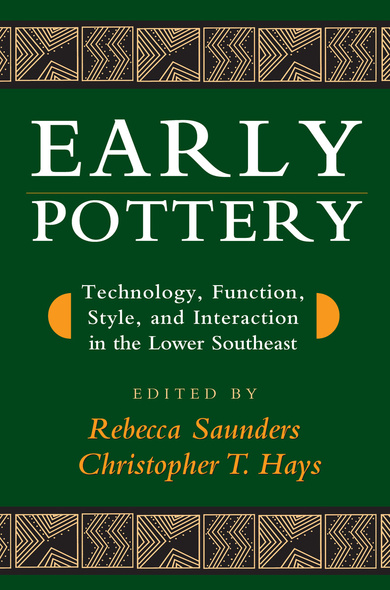Early Pottery
Technology, Function, Style, and Interaction in the Lower Southeast
A synthesis of research on earthenware technologies of the Late Archaic Period in the southeastern U.S.
Information on social groups and boundaries, and on interaction between groups, burgeons when pottery appears on the social landscape of the Southeast in the Late Archaic period (ca. 5000-3000 years ago). This volume provides a broad, comparative review of current data from "first potteries" of the Atlantic and Gulf coastal plains and in the lower Mississippi River Valley, and it presents research that expands our understanding of how pottery functioned in its earliest manifestations in this region.
Included are discussions of Orange pottery in peninsular Florida, Stallings pottery in Georgia, Elliot's Point fiber-tempered pottery in the Florida panhandle, and the various pottery types found in excavations over the years at the Poverty Point site in northeastern Louisiana. The data and discussions demonstrate that there was much more interaction, and at an earlier date, than is often credited to Late Archaic societies. Indeed, extensive trade in pottery throughout the region occurs as early as 1500 B.C.
These and other findings make this book indispensable to those involved in research into the origin and development of pottery in general and its unique history in the Southeast in particular.
This volume comes at an exciting time, and it greatly helps to generate excitement. Some chapters of Early Pottery offer interesting new data, while others summarize a lifetime of research. New theories are coalesced with earlier ones to provide a fascinating view of the Late Archaic or Gulf Formational landscape.'--Ned Jenkins, coauthor of The Tombigbee Watershed in Southeastern Prehistory
Saunders and Hayes present the issues in an excellent introduction, emphasizing both technological and social functions of the earliest pottery to understand cultural interactions that account for its distribution in time and space from as early as 5000--2500 B.P.'
—Journal of Anthropological Research





